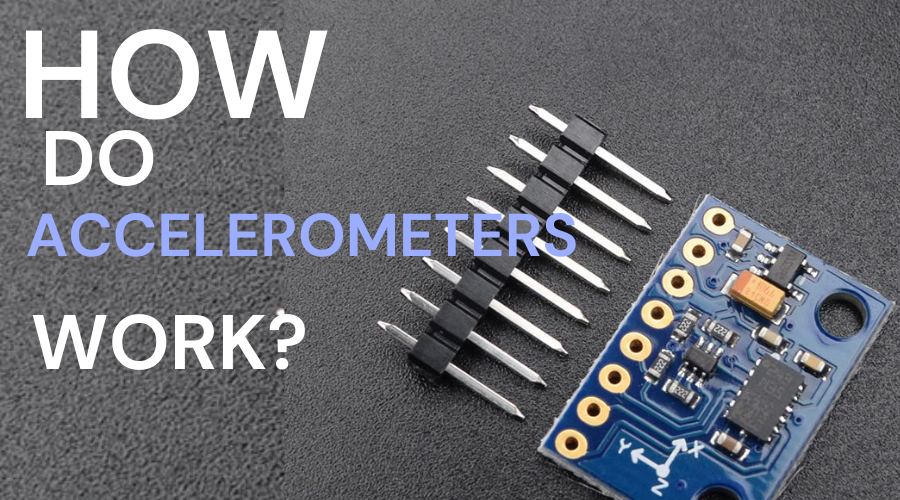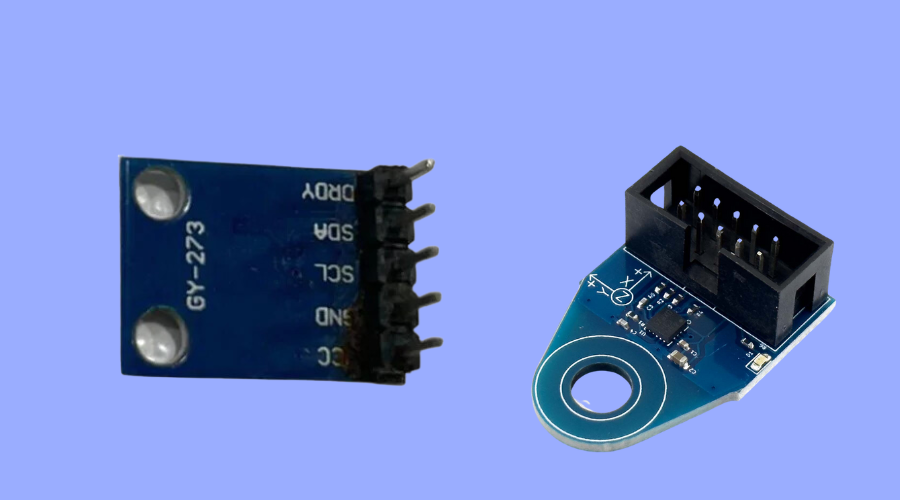-
 No. 659 Hewang Rd, Jiading District, Shanghai P.R.China
No. 659 Hewang Rd, Jiading District, Shanghai P.R.China
-
 info@marvels-sense.com
info@marvels-sense.com
-
 +86-18321684506
+86-18321684506

Have you ever tossed your phone to catch it, mesmerized by the smooth rotation on the screen? Or marveled at the way your fitness tracker accurately counts your steps? The secret agent behind these feats is an accelerometer, a tiny but mighty sensor. This unsung hero translates your movements into electrical signals – the rollercoaster rush, a sailboat's gentle sway, or even the thump of your heartbeat.
But how exactly does this magic happen? Buckle up and prepare for a bumpy ride through the world of accelerometers!
Imagine a microscopic stage with a miniature acrobat performing on a teetertotter. This acrobat is a tiny mass, and the teetertotter is a microscopic platform suspended by delicate springs inside the accelerometer. When you move, the case that holds the accelerometer shifts – think of it as a gentle nudge. But our determined acrobat resists this change! The mass wants to stay put due to inertia (think of it like wanting to stay balanced on the teetertotter). As a result, the mass pushes against the springs, tilting the platform ever so slightly.
Here's the clever part: This tilt isn't random. The amount of tilt corresponds to the force of your movement, which reveals how fast your speed changes (acceleration).
Accelerometers can detect this tilt and convert it into an electrical signal in several ways. Here are two popular methods:
Tiny plates inside the accelerometer act like little capacitors (electrical energy storage units). When the mass tilts the platform, the distance between the plates changes, which affects the amount of electrical charge the capacitor can hold. Voila! The shift in charge tells us how much the mass has tilted, revealing the acceleration.
This method uses a unique material that generates a tiny electric current when squeezed. As the mass pushes against the platform due to movement, it squeezes this piezoelectric material, creating a current whose strength reflects the acceleration.
These electrical whispers are then amplified and interpreted by clever electronics, ultimately giving us a measurement of acceleration.
Accelerometers are incredibly versatile. Here are just a few ways they're revolutionizing our world:
They track your steps, measure your workout intensity, and even help you navigate by detecting your phone's tilt.
Accelerometers capture your movements, allowing you to control in-game characters or navigate virtual worlds with your body.
They detect sudden changes in motion, triggering airbags and other safety features in case of a collision.
They monitor tremors in Parkinson's patients, track sleep patterns, and even help diagnose balance disorders.

Are you ready to put your knowledge to the test? Grab your smartphone (most likely equipped with an accelerometer) and try these:
: Hold your phone flat and swing it back and forth. Can you feel the vibration as the accelerometer detects the change in direction?
Place your phone on a flat surface and open a compass app. Tilt your phone—the compass reading should change due to the accelerometer's influence.
What's the difference between an accelerometer and a gyroscope?
Both measure motion, but accelerometers detect speed changes, while gyroscopes track rotational movements.
Can accelerometers measure gravity?
Yes! Gravity is a constant acceleration, and accelerometers can detect this pull, allowing them to determine tilt and orientation.
Are there different types of accelerometers?
Yes! We've discussed two main types, but there are also micromachined accelerometers (MEMS), miniaturized versions, and accelerometers with multiple axes to detect movement in various directions.
So, the next time you tilt your phone or feel your fitness tracker buzzing, remember the tiny acrobat inside, valiantly measuring your every move. Accelerometers are a testament to human ingenuity, transforming the invisible forces of motion into a symphony of electrical signals that power our modern world.
The first practical accelerometers were developed for military applications in the early 20th century.
Modern accelerometers are incredibly tiny, some smaller than a grain of sand!
They can be susceptible, even detecting the subtle tremors in your hand as you write.
Some high-performance accelerometers, like those experienced during rocket launches, can withstand extreme forces.
Researchers are exploring using accelerometers in everything from self-driving cars to smartwatches that monitor your posture.
The world of accelerometers is constantly evolving. Here's a glimpse into what the future holds:
Improved Accuracy and Sensitivity: Expect even more precise measurements, allowing for more sophisticated applications.
Integration with Other Sensors: Combining accelerometers with other sensors, such as gyroscopes and magnetometers, will create powerful motion-tracking tools.
Ultra-low power consumption will lead to longer battery life in wearable devices and the Internet of Things (IoT).
Biomedical Applications: Accelerometers could monitor gait in elderly individuals or track muscle activity during rehabilitation.
As these advancements unfold, accelerometers will continue to play a vital role in shaping our future. From revolutionizing how we interact with technology to aiding in medical breakthroughs, these tiny sensors are poised to impact our lives significantly.